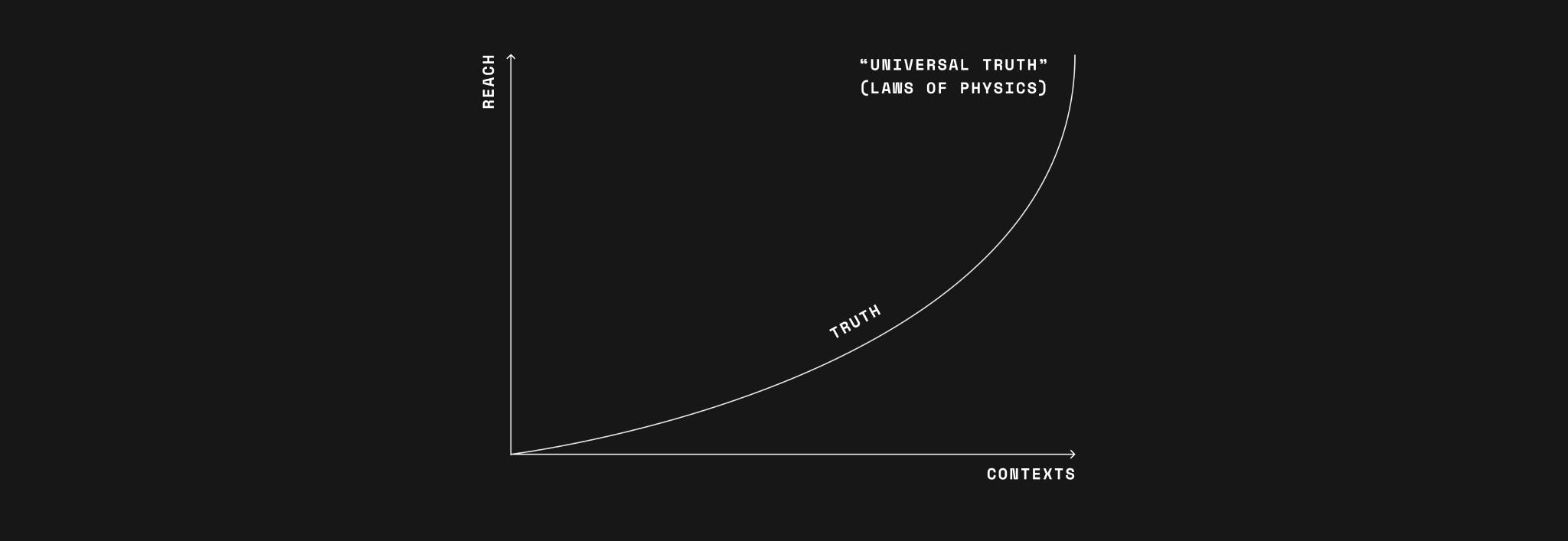
Reaching truths
Measuring the immeasurable nature of reality.
What is true and what is not?
Here's how I approach questions like this:
This is my way of rhyming the objective with the subjective.
The modernist, scientific worldview rightly realises that there are patterns in nature we can study, quantify, and reason with. That the outcome of the experiments we conduct when we hypothesise about these patterns tells us something important that can’t be denied. Something that is "objectively" true.
The post-modernist, existentialist worldview rightly challenges that any truth can always and anywhere be “true” by remarking it takes a leap of faith to go from direct phenomenological experience to the abstract symbols (language) we use to describe that experience. That is, there is no pure, unfiltered way to think about and reason with truths — only through a layer of symbols, models and metaphors that represent them but can ever only approximate the “real thing”.
Both have a point. Neither get the full picture.
Those with a scientific worldview shrug off the importance of subjective experience.
Those more grounded in their conscious being tend to pretend there is no such thing as “objective truth.”
The idea that truths can only be understood within their contexts is post-modern.
Original perception of reality happens through individual bodily sensations: sights, smells, sounds, touches, tastes. Only after direct experience can we think about it. Our brains abstract experience into linguistic concepts, which we then use to build mental models of reality that can be reasoned with and communicated to others.
This capacity for thought is what sets humans apart. It’s what allows us to create and coordinate shared realities at scale: cultures, technologies — civilisations.
However, thought can ever only refer to direct experience and therefore never fully grasp it. The description is not the experience. The map is not the territory.
"The menu is not the meal." — Alan Watts
The further abstracted and complexified through time/language/media, the further thought fades away from the objective world it describes. Thus, says the post-modernist: since we can only think and communicate in symbolic systems, knowledge of the objective is, strictly speaking, impossible. Knowledge as constructed by human minds can ever only reflect the real thing.
"All words, in every language, are metaphors." — Marshall McLuhan
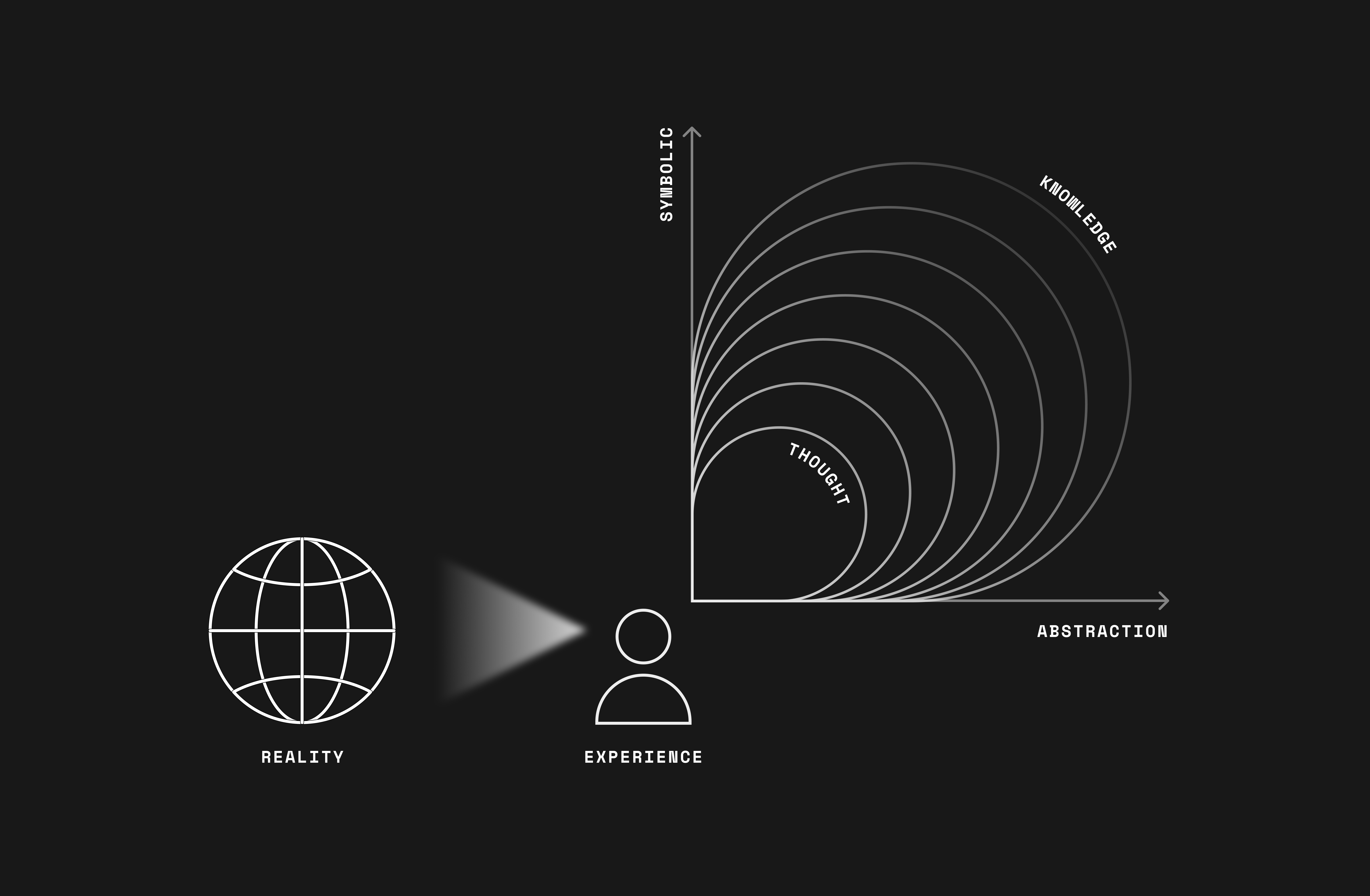
What's more, the reflection is relative. The same reality looks different from different points of view. Literally, but also culturally, historically and individually: truth is contingent on perspective — from where you see it.

Subjectivity of individual experience is verified by neuroscience: the brain interprets (predicts, actually) reality through mental models it learned from the past. That is, every individual sees the same reality differently in function of their unique history.
"There are no facts. Only interpretations." — Friedrich Nietzsche
So far so good.
But then the post-modernist goes on to say that, since all truths are distillations from personal experience, every individual has their own truth. That there is no basis for one mind to make judgements about the truth of another. Flat-out, he denies the truth of one context can be more true than that of another.
As anyone with the slightest common sense will sniff out, that is obviously wrong. A million different people making a million different statements about the same reality can’t all be equally right.
Somewhat comically, the post-modernist falls into the trap he was trying to escape in the first place: he tries to assert the impossibility of objective truth as the one and only objective truth.

Here's where the idea “reach” comes in useful.
Reach of truth implies that every context is a part that connects with other parts to make wholes. And, while each part can have its own truth, the whole, too, can have truth that picks one part over the other.
In every interaction we have, in every moment we share, there is something in our experience that is true to that interaction, that moment.
At the same time, some truths are more true in more realities than others. They dynamically persist across many evolving contexts, while others fade when conditions change.
Per Alfred Korzybski: the map is not the territory. But it doesn't have to be: the map just needs to approximate the territory well enough to navigate it effectively. Crucially, maps (truths) are bound to the territories (contexts) they predict: what is true in some isn't in others — which is what we mean when we say that "truth is relative". And some maps are true in more territories than others. Their predictions hold true across a greater variety of contexts, i.e. they are more probabilistically sound. They have greater reach.
“A map is not the territory it represents. But, if correct, it has a similar structure to the territory — which accounts for its usefulness." — Alfred Korzybski
We are constantly negotiating what is true in the world with other people. But some truths are less negotiable than others. Just because I imagined an ability that defies the laws of physics (eg. "I can fly") doesn’t mean the laws of physics are suddenly disputable.
The laws of physics hold true across far, far more contexts than whatever I'm capable of imagining. They are in fact the most ubiquitous truth humans have found thus far. And yet, not even the laws of physics are absolute, i.e. they're contextually bound.
For example, quantum mechanics and general relativity each work exceptionally well at describing phenomena in particular areas of spacetime, but trigger inconsistencies when we extend them beyond to understand the universe as a whole.
“All our theories of physics, in one way or another, apply only to subsystems of the universe. They don’t apply to the universe as a whole.” — Lee Smolin
Reach helps us measure and rank truths by scope. It recognises that, even though pure objective truth may be impossible to achieve, we can pursue and approximate it.
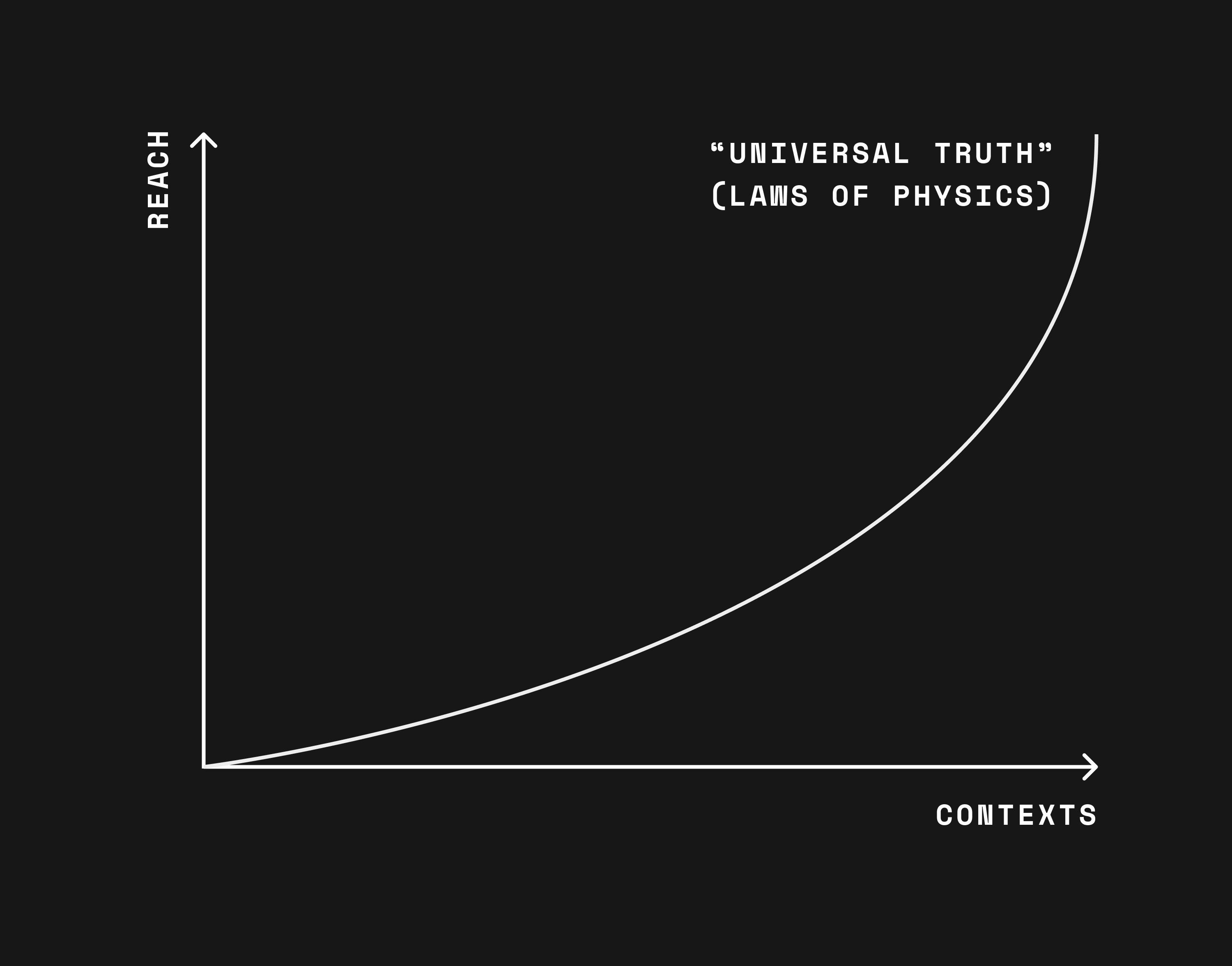
Another example of truths with great reach are those of human nature.
Sure: every person, every culture is different and it’s near-impossible to compare each in a reasonable way. Still, there are universal patterns that have held true across history, across culture, across all people. A few come to mind:
Social — Humans have intrinsic desire to belong, form relationships and create communities. We make families, tribes, societies and Discord groups.
Meaning — Humans seek meaning and purpose beyond themselves — be it through religion, philosophy, art or personal achievement.
Mimesis — Humans learn by imitating others. It’s how knowledge, values, rituals, traditions and beliefs proliferate from one generation to the next.
Cooperation/Competition — Humans work together at scale to achieve common goals. At the same time, groups compete for resources and status.
Creation — Humans are driven to create — be it art, writing, music or any other form of expression. It’s how we process experiences, share stories and connect with others.
Curiosity — Humans are relentlessly curious about their environments, leading to exploration, scientific discovery and the proliferation of knowledge.
Hierarchy — Power dynamics recur across different societies — whether based on wealth, gender, wealth or other factors.
These patterns recur so consistently and ubiquitously across space/time that they cannot just be dismissed every time an outlier experience seemingly doesn’t fit them.
The original problem lies with the terminology of subjective versus objective in the first place. It sets up a dichotomy that doesn’t need to exist in the first place.
This, in turn, is downstream of the larger problem with language itself. In one way or another, language ultimately always refers back to itself. And so inevitably creates paradoxes, inconsistencies and ambiguities.
“The truth always carries the ambiguity of the words used to express it.” — Frank Herbert

The self-reference problem of language famously manifests in the Liar’s Paradox.
Consider the statement “This statement is false.”
If the statement is true, then it’s false — as it claims.
If the statement is false, then it must be true.
Due to the self-reference problem, every system of language is bound to be incomplete in the face of capturing reality.
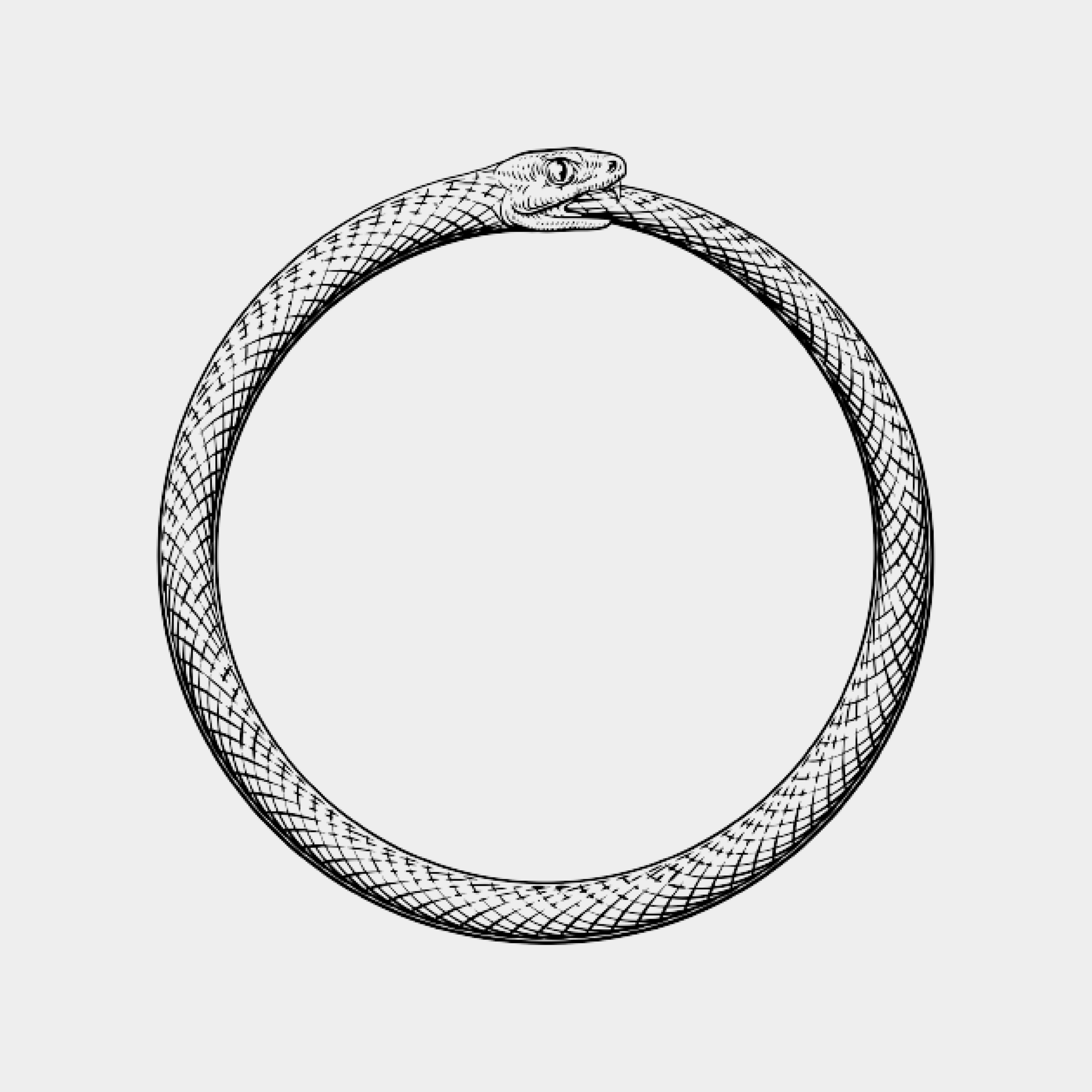
What about math?
Surely the most direct, unambiguous (objective) way to describe nature. Its principles so predictively powerful across history and universe that they appear universal. Its reach so vast it evokes the divine.
"Nature is written in mathematics." — Galileo Galilei
But, as many have echoed throughout history: we couldn't get by with just math. As much as it excels at exacting quantities, relationships, patterns and structures of reality, math can't express the human experience [feeling] of it. It has no capacity for storytelling and the culture it springs.
"What is truer than truth? The story about it." — Old Jewish saying
"Fiction is the lie through which we tell the truth." — Albert Camus
Math and natural language (eg. English) are not alternatives but complements. They're different vectors of truth, covering different layers of reality.
Human feeling is a computed summary of all bodily sensations going on in a specific moment. At the most fundamental level, these are biochemical processes that can be exacted as mathematical values.
Our brains conceptualise these feelings as emotions. Emotions are how we linguistically label and interpret various hues of feeling. As such they come to "mean" something as subjects for storytelling, imitation and culture. In a way mathematical values could never.
Just like language, math is a measure of reality. And just like language, it is incomplete.
In his Incompleteness Theorems, Kurt Gödel demonstrated that the self-reference problem isn’t limited to language but also appears in mathematical and logical systems. Each is bound to make statements that cannot be proven true or false using the rules of the system itself.
No one model of the world can fully compute the complexity of the world around us. Every system of description is inherently incomplete because it attempts to ascertain something inherently uncertain. Reality is complex, intricate and always in flux to a point that every attempt to define/measure/abstract it must always fall short.
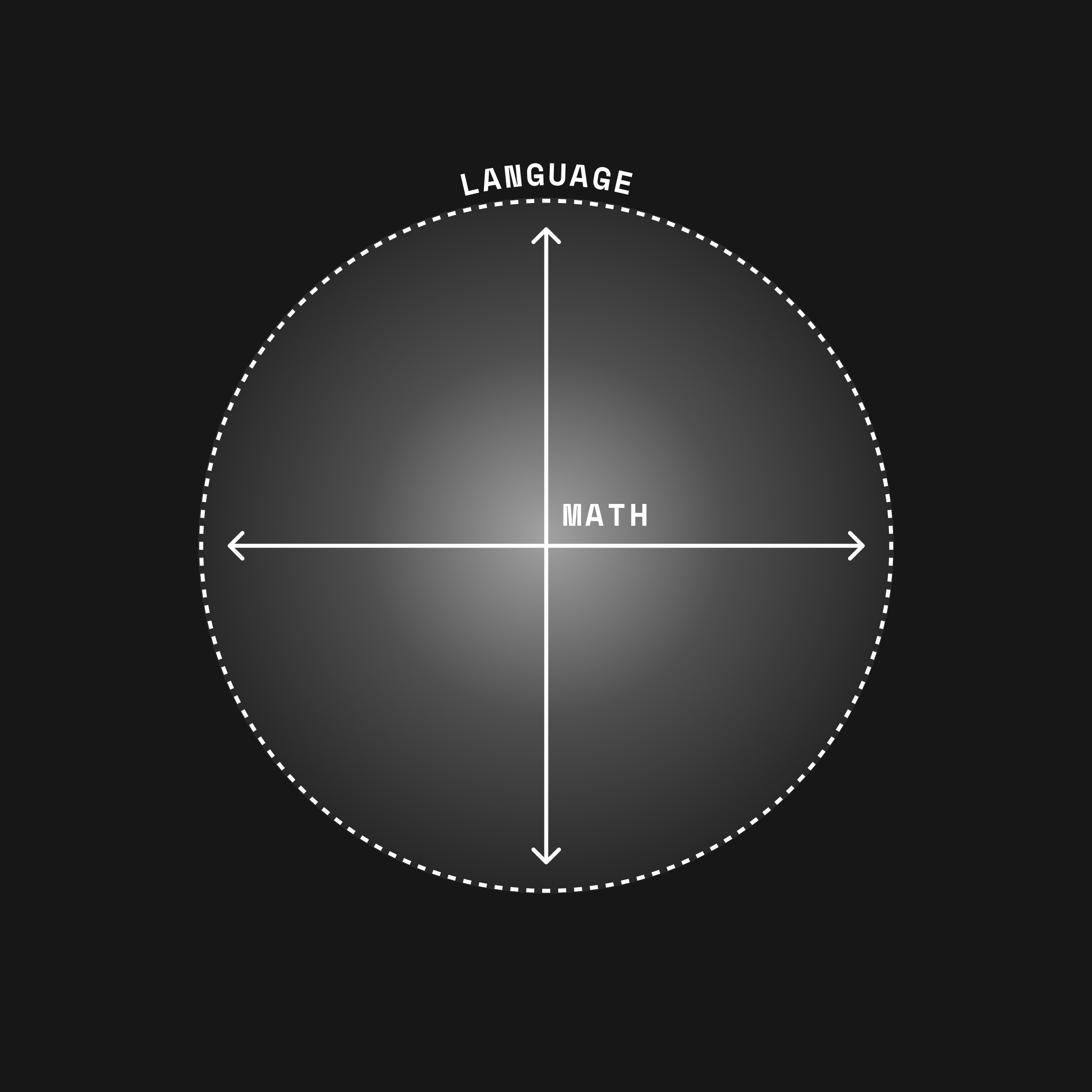
Case in point: not even our laws of physics currently describe the entire universe. There is no theory of everything; no truth that describes all contexts.
“Man is always in danger to confuse his measures with the world so measured.” — Alan Watts
Uncertainty is the hand we are dealt and the way to deal with it is through probability — measuring how often something is true.
While no single model nor language can 100% capture truth, we can combine many different models and languages. Then work with probabilities to approximate it.
"All knowledge degenerates into probability." — David Hume
Overlap becomes the measure for truth: the places where different models of the world say roughly the same thing — even if so in different ways, in different terminologies, in different contexts.
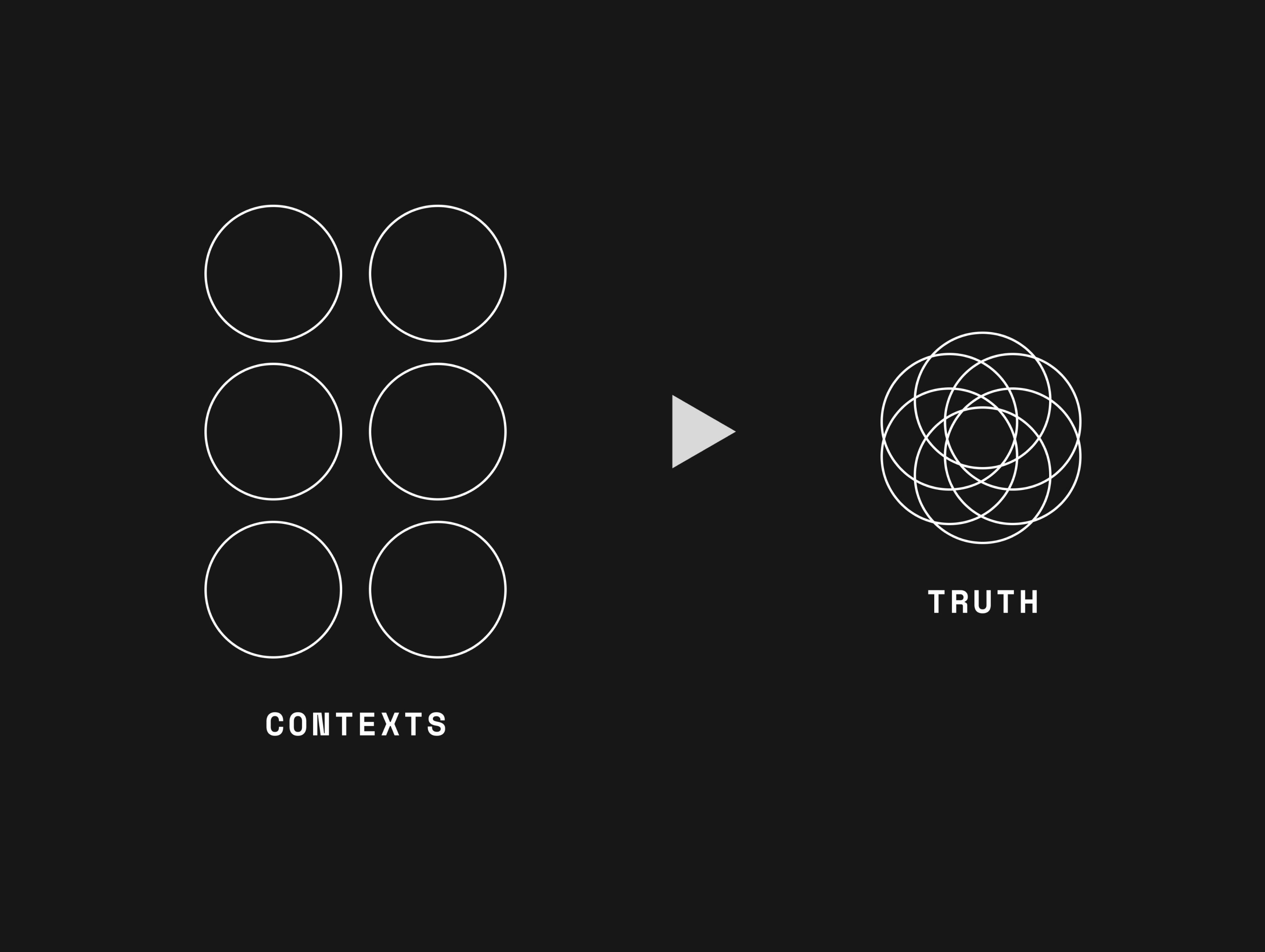
To illustrate, consider this snippet from Science, Strategy and War by Frans Osinga, which explores the strategic theories of US Air Force Colonel John Boyd. (The book is most famous for OODA — Observe, Orient, Decide, Act.)
Imagine you are on a ski slope with other skiers.
Imagine you are in Florida riding an outboard motorboat, maybe even towing waterskiers.
Imagine you are riding a bicycle on a nice spring day.
Imagine you are a parent taking your son to a department store and that you notice he is fascinated by the toy tanks with rubber caterpillars treads.
Next:
Imagine you pull the ski’s off but you are still on the ski slope.
Imagine also that you remove the outboard motor from the motor boat, and you are no longer in Florida.
And from the bicycle you remove the handlebar and discard the rest of the bike.
Finally, imagine you take of the rubber threads from the toy tanks.
This leaves only the following separate pieces: skis, outboard motor, handlebars and rubber threads.
Boyd’s challenge: what emerges when you pull all of this together?
His answer: the different parts taken from different tools together make a snowmobile.
This isn’t obvious to most grappling with the question at first thought. Precisely because we had just before been seeing the independent parts in separate contexts do we struggle to see them beyond. Each independent part can mean something different depending on how it fits in a particular setting, depending on how it’s used. At the core of it all, however, it’s the same thing — just extending its truth across various contexts.
The same principle is at play when we study different disciplines, different languages, different philosophies. More often than not, they describe the same things in different ways. The same truths from different perspectives.
Language itself can never precisely capture truth in words — which is why deep affection to precise meaning is futile. But many different perspectives looking at the same thing defined in multiple ways, in different contexts, can identify general consistencies.
The bigger the diversity of contexts across which a truth remains true, the more general, the more universal, the more context-independent, the more “true”. The bigger its reach.
"Realize that everything connects to everything else." — Leonardo Da Vinci
What we’re really talking about here is time.
When trying to identify patterns we can trust to be useful in dealing with life’s uncertainty, we have to look at how well they have stood the test of time — how adaptive they’ve been over the course of history. Endurance of truth across societal, technological and environmental change signals universality.
This is why we say that “history rhymes” rather than “repeat itself.” Truths remain, contexts change. It’s similar, not the same.
Here the post-modernist may come at me and say that history, too, is only available to us through symbolic systems. We do not have access to the experiences of people throughout history, only symbolic accounts thereof — bounding us again to self-referential limits.
Fair enough.
However: the next best thing is to evaluate how adaptive those symbols have proven themselves across ideas, domains, disciplines — across time.
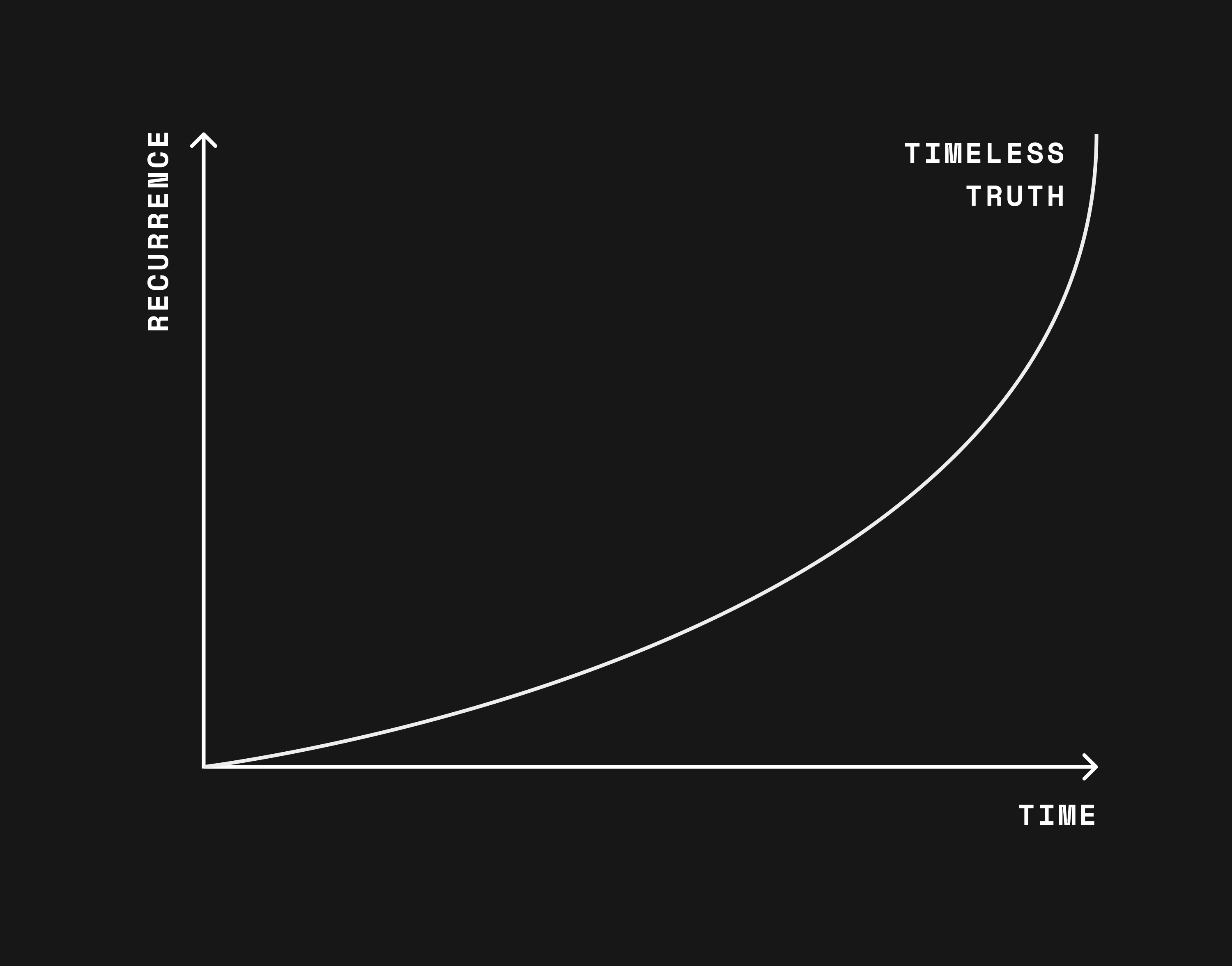
Recurrence through time means it works and predicts with a high degree probability that it will continue to work in an uncertain world, i.e. the truth is time-less. It's the best signal that there is something more than meets the eye.
Each moment in time has a particular truth of its own. Trapping it in numbers and language inevitably falls short of the real thing.
At the same time, it's the only version of truth we can talk about in the first place.
Reality
Experience of reality through bodily sensations (individual)
Description of the experience of reality through thought (shareable, scalable)
The closest we can get to "truth" is what comes before trying to trap it: direct, pure experience. To know the truth of a moment means to sense it. To feel it, move with it, be a part of the moment itself.
Thought is downstream from sensing, gets triggered by it.
Once we think about the moment, we snap out of it. At that point we enter the world of abstraction, symbols and language; inevitably losing that part of truth that cannot be represented by it.
“Thoughts are the shadows of our feelings — always darker, emptier and simpler.” — Friedrich Nietzsche
What's more, thought is generative: it keeps chaining from itself when not halted — at the cost of abstracting itself ever further from reality. Eventually, chaining thoughts get stuck in self-referential loops. We over-think, get lost in the shadows.
"You can know the name of a bird in all languages of the world, but know absolutely nothing about the bird. So let's look at the bird and see what it's doing: that's what counts. I learned very early the difference between knowing the name of something and knowing something." — Richard Feynman
Sensing and thinking split reality into two layers. One is the thing, the other is thinking/talking about the thing.
The described and the description. The measured and the measure. The map and the territory.
Few have nailed this distinction more elegantly than Belgian surrealist René Magritte with La Trahison des Images [The Treachery of Images].
![René Magritte, « La Trahison des images » – Bav[art]dages](/_next/image?url=https%3A%2F%2Fstorage.googleapis.com%2Fpapyrus_images%2F673c4f1e1c2d4922438b1e284309bcfd.jpg&w=3840&q=75)
Magritte paints a pipe but then writes "This is not a pipe".
No, it's a not a pipe: it's an image of pipe. If we go deeper into the abstracted layer, the word "pipe" is not a pipe but a configuration of arbitrary symbols (p, i, e) that points to the reality of a pipe, as socially agreed upon by speakers of French (and, coincidentally, English).

The talking about the thing is symbolic knowledge. The capacity for it has differentiated humans in the animal kingdom.
Conceptual thought enables us to create abstractions. Complex, symbolic language enables us to share those abstractions with others.
We can mentally model realities around us, then combine and remix those concepts as composable mind LEGOs to imagine realities that don't exist yet.
We can share these models with others as ideas using symbols and language.
Minds sync together around shared ideas, and can work together to make it real.

Symbolic knowledge unlocks and scales human civilisation. It's the seed of epic narratives (Christianity, democracy, human rights) that mass-socialise us around greater good goals. No other animal can get millions of strangers to work together as a tribe.
Earth metaphorically shifted on its axis ~50,000 years ago. After ~4 billion years of nature programming minds, minds started to program nature.
This collective consciousness is a distinct plane of reality: a social sphere that select ideas much like the biosphere selects genes.
Ideas on what is good and bad program human behaviour through culture. Implicit norms and values network together into ideologies and religions, then become encoded in laws and institutions that enforce them. In culture, thought takes on a restrictive form.
Ideas on how to achieve more with less program the environment through technology. Embodied in objects and structures, they expand our capacity to protect and provide. In technology, thought takes on an active form.
Monkeys can make spears, but you can't make cars and computers without compounded and coordinated symbolic knowledge. From myths to religion to art, science, morality, corporations, banks, bombs, blockchains and spaceships: all of its roots from thought extended through symbols.
"That's all a motorcycle is: a system of concepts worked out in steel. There's no part in it, no shape in it, that is not out of someone's mind." — Robert Pirsig
But the scalability of symbolic knowledge comes at the cost of truth. It’s generalized and typically breaks in contact with the specificity of reality.
“Language does for intelligence what the wheel does for the feet and the body. It enables to move from thing to thing with greater ease and speed and ever-less involvement.” — Marshall McLuhan
For example, you can’t learn riding a bike, boxing, designing, coding or leadership by reading books about it. These are skills; embodied knowledge created in interaction with specific contexts — iterated through trial and error.
This type of knowledge is silent or tacit: things we just know, don't think about, and apply intuitively through our bodies from situation to situation, moment to moment, context to context — evolving with time.
"All knowledge originates from our sensations." — Leonardo Da Vinci
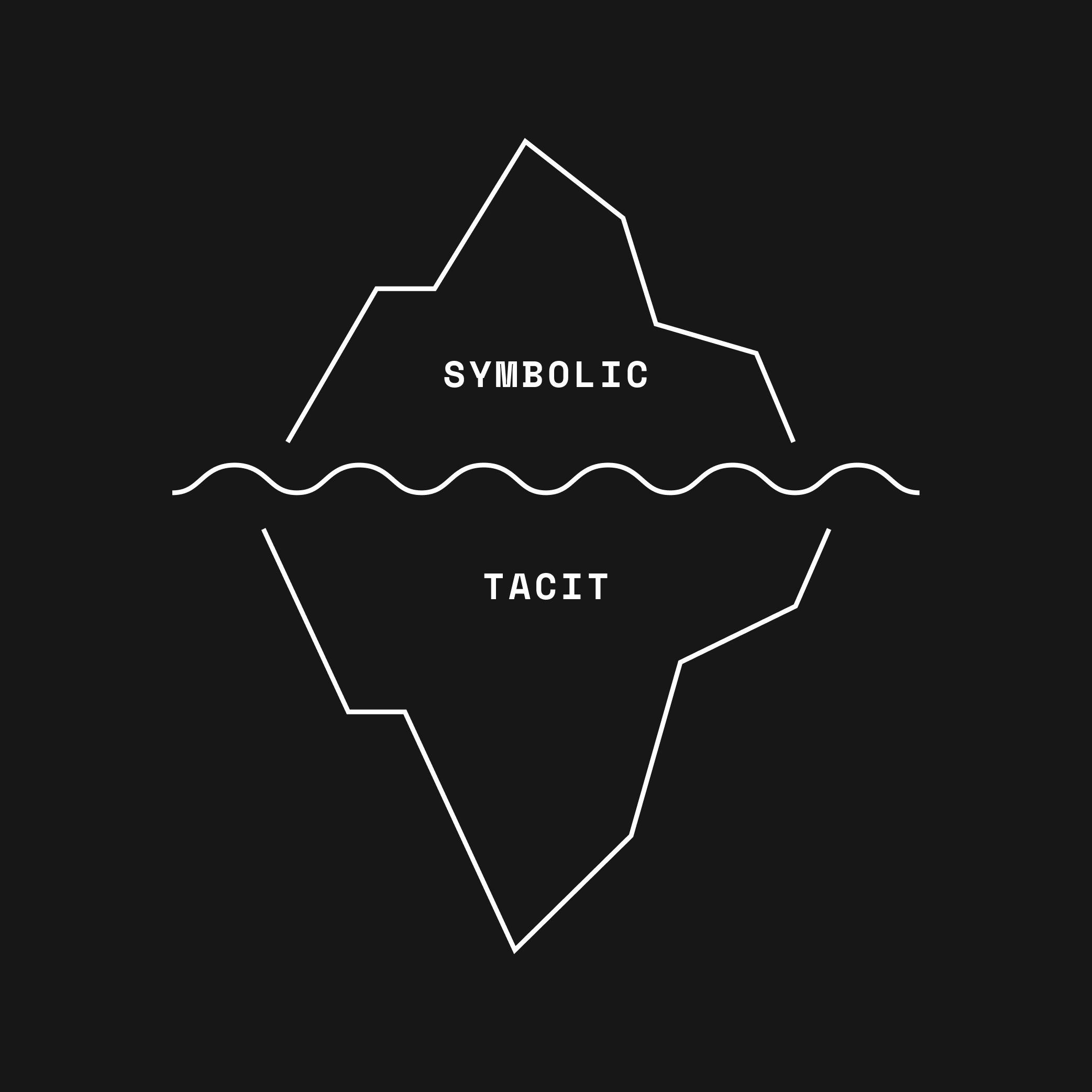
Our bodies have a supreme capacity for learning truth from direct experience, stored as intuition.
“There is more wisdom in your body than in your deepest philosophy.” — Friedrich Nietzsche
Intuition dynamically operates without thought and thus feels like autopilot: behaviour executes fluidly. By no means is that behaviour random: these are non-linear patterns of reality the body has learned from past experience.
Try to understand these patterns with intellect and you'll find nothing. Underneath symbolic knowledge there exists an original, irreducible sort of truth. Something immeasurable that intuition senses more completely than intellect can.
"Intuition is a sacred gift and intellect a faithful servant. We have created a society that honours the servant and has forgotten the gift." — Albert Einstein

Language is the tool through which we can codify some but not all of this tacit knowledge into symbolic knowledge.
"To define is to limit." — Oscar Wilde
"Whatever one can say, no words express the whole." — Carl Jung
This very post, Hegel’s philosophy, Naval’s aphorisms on wealth, the idea of human rights, scientific paradigms; all we read in books and media.
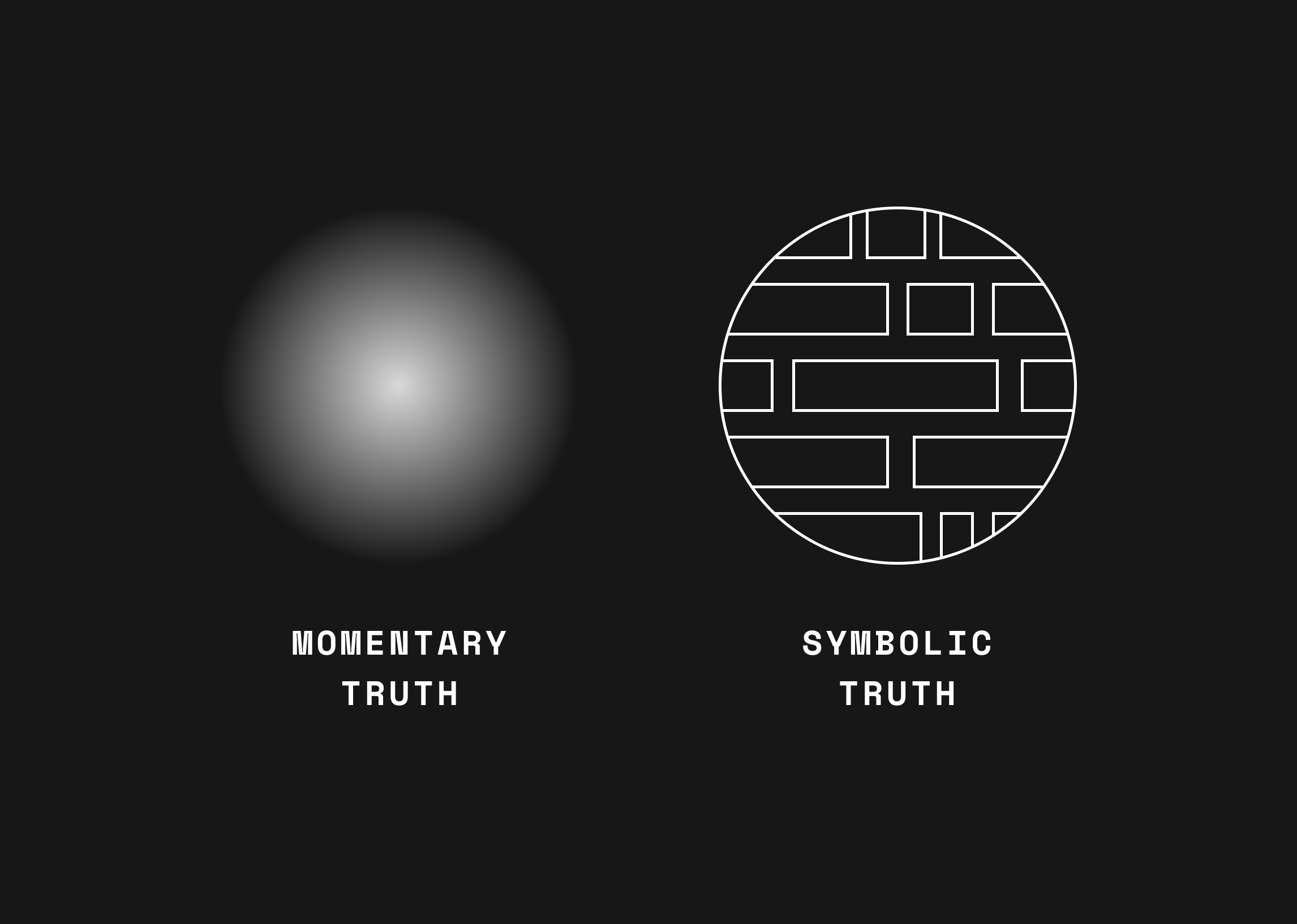
Mental mapmaking is humanity's triumph over nature's constraints. But the very tools we use to navigate and bend the world to our collective will has ironically distanced us from truly experiencing it. We get so caught up in our vastly interconnected webs of meaning that we forgot to feel our feet touch the ground.
Out of touch with reality and our innate sense for it, we fall prey to overthinking. We think, think and think — only to keep getting trapped in the same self-referential loops over and over again.
You cannot think your way out of overthinking.
A map is a function of the territory it reflects. Thought is a function of the body it serves. Mistaking the echo for the music leaves us feeling restless, alienated.
“All of humanity's problems stem from man's inability to sit quietly in a room alone.” — Blaise Pascal
The symbolic level slices and dices the whole, fluid truth into pieces, focussing our experience on some while denying others. This is what post-modernists mean when they say that “truth is subjective”.
"Thought is so cunning, so clever. It distorts everything for its own convenience." — Jiddu Krishnamurti
The fatal post-modernist error is that they pose "truth is subjective" as final conclusion, reducing truth to "personal narrative." This pretty much denies the idea of truth itself and thereby constitutes an inherently pessimistic philosophy, casting doubt and suspicion upon the most basic things of life.
Reading post-modernists, you'll find pretty much all of them are nihilists. Strip away everything as "relative" and you're left with silence, and "silence is nothing."
But is silence really "nothing"?
Listen to silence with intellect and you'll indeed find nothing. You'll probably even use big words and fancy arguments to convince yourself there is indeed nothing. Really, you're just using your intellect to blind yourself.
What most miss is that thought is a tool of the body, and the body is not a tool of thought. When a thought serves the body, it is useful. When it doesn't, it gets trapped in its own prison of delusion.
At the most essential level, there is an irreducible creative energy that moves through the body before thought can make judgements about it. It doesn't care about assumptions of meaning and meaningless. It doesn't care about what a thought thinks because it itself is what the drives the existence of that thought to begin with.
Talking about a thing is not the thing itself. Thinking about the body's experience is not the body's experience. Thinking about being alive is not being alive.
"Be a philosopher. But, amidst all your philosophy, be still a man." — David Hume
Most people, including many philosophers, confuse the talking about the thing with the thing itself. Falling in one of two traps:
They cling to their thoughts, their assumptions, their world views because it gives them stability. They fear what is on the other side: uncertainty.
They take deconstruction so far it becomes destruction: nothing is left. The intellect becomes a weapon rather than a tool. This is the post-modernist sin.
Both approaches break your thinking:
Ignoring things that don't match your mental model doesn't make them any less true.
Nihilism, in its denial of reality beyond the symbolic, misses out completely.
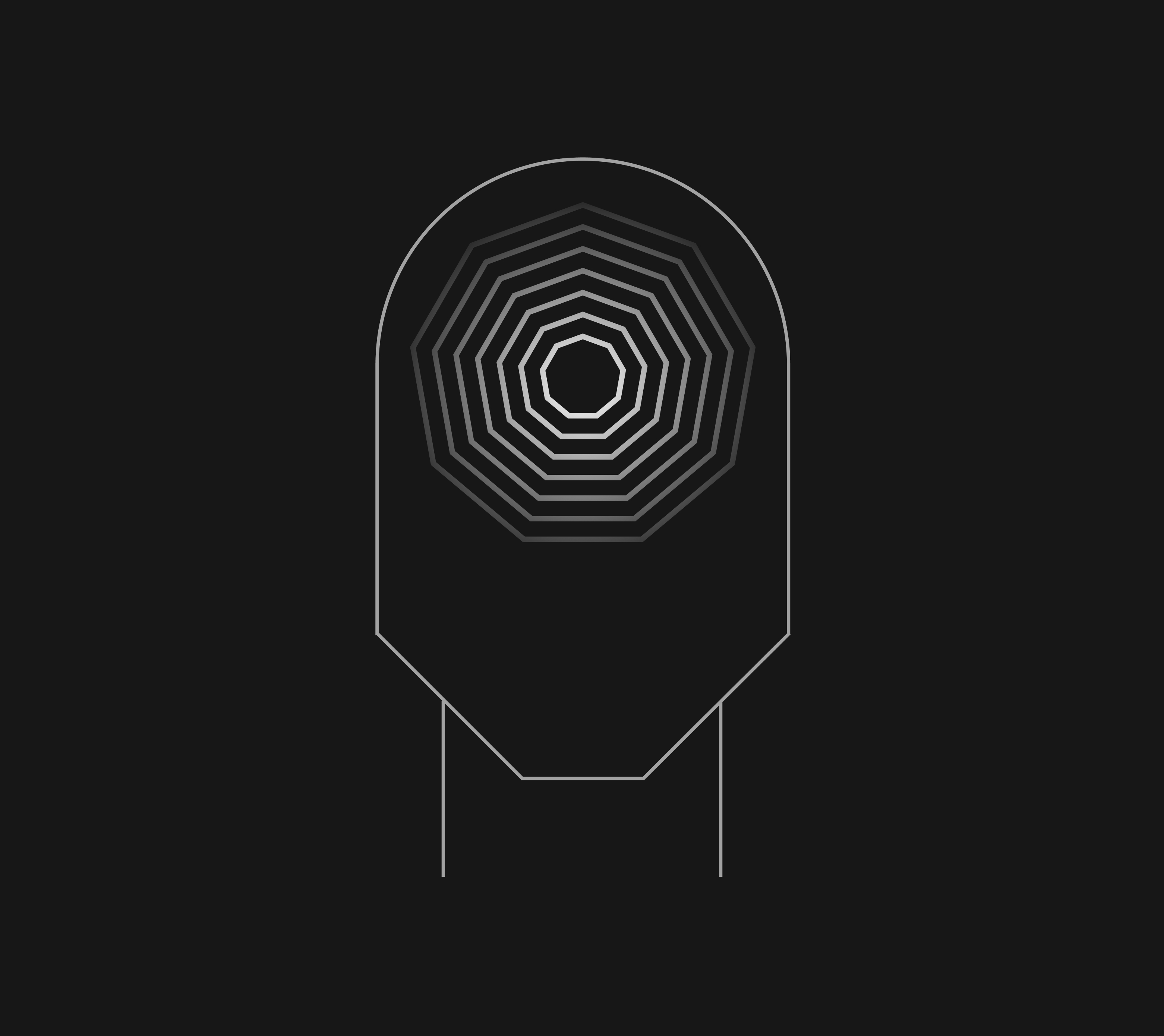
This is not to argue that thinking is bad, but to acknowledge its limits. Thinking is a tool for building structures through which to perceive truth and share it with others; socially shared conceptual structures are what binds minds together at scale. But the structures should not be confused with the truth itself.
The point of philosophy then is to ask better questions so to create better models. But if you want the truth, you are better off listening to silence.
"If you and your thoughts are part of this universe, you cannot stand outside them to describe them. This is why all philosophical and theological systems must ultimately fall apart. To “know” reality you cannot stand outside it and define it; you must enter into it, be it, and feel it." — Alan Watts
How then do we get in touch with this unfiltered essence?
For starters, by stopping to talk and think about it. To simply be in the moment, still and sensing.
"Those who know do not speak. Those who speak do not know." — Lao Tzu
For most, that is easier said than done. To not think feels weird, uncomfortable — unnatural almost. What would we be doing instead of thinking, then?
Remarkable, isn't it?
The symbolic, the abstracted, the mediated has conditioned us so much as to become our default state of being.
The truth is right here, and there, all around us, to be felt through the body. But we are too preoccupied with memory and expectation to notice. Too fascinated with names, numbers, symbols, signs.
Mindfulness trains attunement to the body and its truth. Flow states also come to mind.
Both are practice. They exactly need to be done, not said. Reading this post and whatever more can only get you as far as intention.
“To understand the immeasurable, the mind must be extraordinarily quiet. Still.” — Jiddu Krishnamurti
In fact, there's a telling contradiction in writing about these things. By now you'll have noticed my struggle to verbally express the inexpressible. I can merely point, hint, walk around — not trap.
The closest I can get is the idea of Shoshin, which in Zen Buddhism expresses something like "beginner's mind".
Shoshin means to practice looking at the world like it's the first time you're seeing it. It's a state of emptiness open to absorption, rather than projecting understanding.
If you have ever surfed, you'll know that the ocean is unforgivable.
Every time you get in the water, you are operating under new conditions. The learning never ends because the ocean is never the same.
It's why they say surfing is one of the hardest sports to pick up as beginner. It's not like golf, where you can get your swing down by sheer repetition in roughly the same conditions.
Surfing teaches you to yield, to lean into each moment and figure it out as you move. To attune yourself to your environment, absorbing the pattern of the waves onto your board and into your body — adapting in realtime to what you are sensing.
To surf, you have to be a beginner with every new wave. If not, the ocean will humble you in one way or another.
To see the truth of the moment means to ride it with a beginner's mind — life a surfer rides a wave.



 19
19


first post I’ve put out in a while “an anthology on different ways of navigating truth” https://paragraph.xyz/@gillesdc/truth